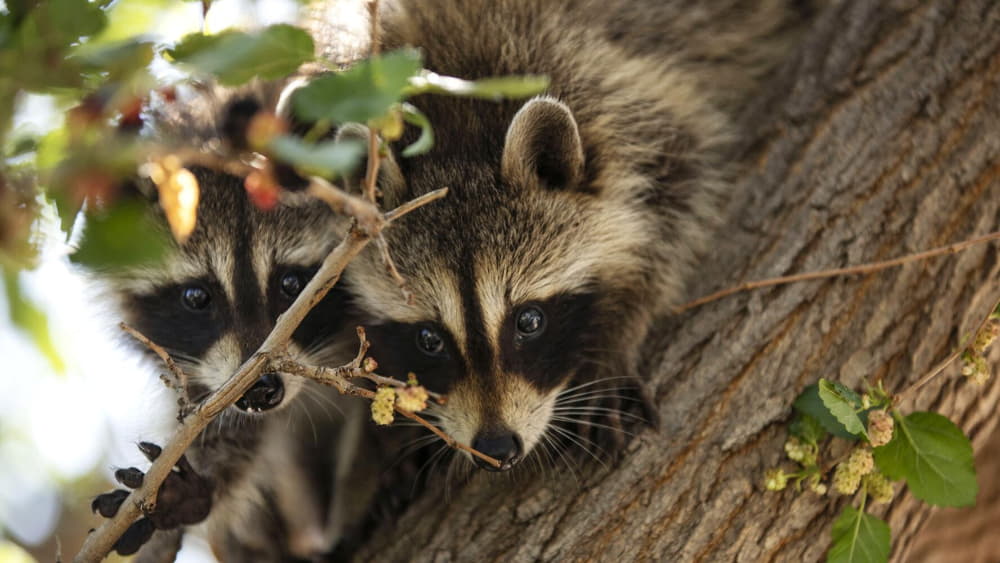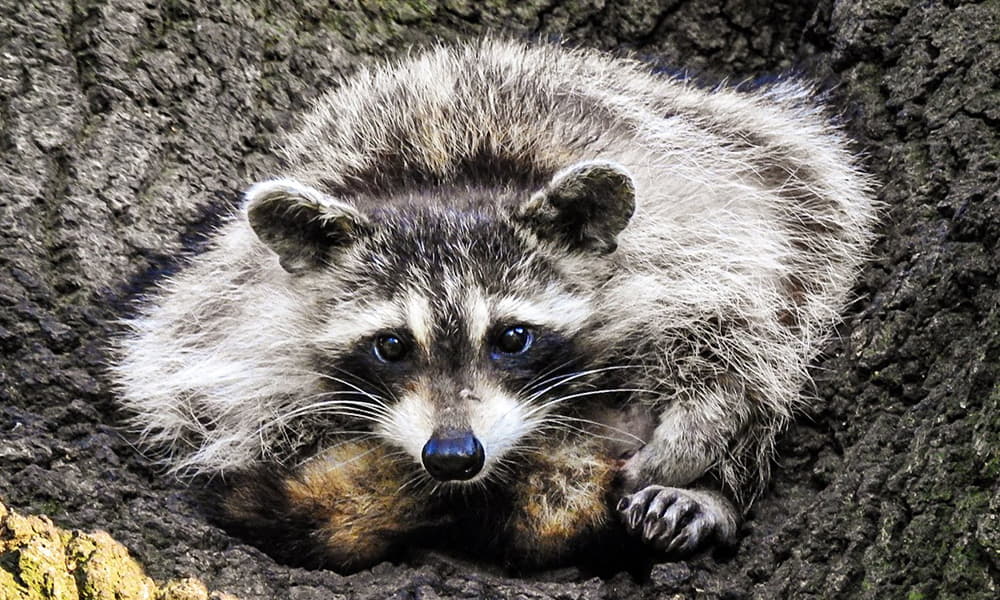Because raccoons have a relatively short lifespan, their gestation periods are also relatively short. The raccoon gestation period usually takes place in the spring. Most raccoons begin mating in January and have a litter of kittens between March and May.
They do not have 9-month pregnancies like humans. The sow’s precise nesting habits and enhanced maternal instincts are hallmarks of the gestation stage. As omnivores, raccoons thrive in a variety of habitats, and their short gestation period contributes to their adaptability. This ensures the survival of their offspring in diverse environments.
Raccoons have an extremely flexible reproductive strategy. A female may mate again if she loses all her young early. Raccoons can have 2 to 5 cubs in a litter each year. During this time, the mother raccoon also showed obvious changes compared to normal. Understanding the nuances of raccoon gestation sheds light on the remarkable reproductive biology of these resourceful mammals.
Table of Contents
Raccoon Reproduction Cycle
The raccoon reproductive cycle begins when a male raccoon discovers a female in heat. The raccoons’ mating ritual consists of extensive biting and scratching as they mate for an hour to three or four days over the course of two weeks.
Female raccoons are only receptive to these approaches during their peak fertility period, which occurs once a year in December and March. During this phase, the pair may mate multiple times per day.
Breeding usually takes place in the late winter. If the female is not bred during this period, she enters estrus again in four months and can be bred, giving birth to kids later in the summer. The majority of cubs, however, are born in April and May.
Raccoon Gestation Period
Once a male and female raccoon have successfully mated, the female undergoes a process known as delayed implantation. This means that the fertilized eggs are not immediately attached to the uterine wall but instead remain dormant for several months.
This delay allows the female to time the birth of her offspring with optimal environmental conditions, such as warmer weather and an abundance of food. The female raccoon undergoes a gestation period that normally lasts between 63 and 70 days.

How Can You Tell If A Raccoon Is Pregnant
There are 3 main signs to recognize a pregnant raccoon including mating season, isolation behavior from others and physical signs of pregnancy.
Mating Season
Raccoon mating season typically occurs from January to June, with January to March currently the optimal breeding season. They usually breed in spring. A female raccoon can return to heat after four months and may even give birth in late summer, if she is not pregnant when she is fertile. So when you encounter a raccoon at this time, there is a very high possibility that they are pregnant.
Isolation Behavior
Male and female racoons live in separate enclosures. Females often concentrate in tiny groups known as “fission-fusion” groupings. When a female racoon becomes pregnant, she leaves the group and isolates herself. She does this in order to find a safe haven away from predators. This is required so she can be pregnant in peace and give birth without endangering her unborn children. When the cubs are self-sufficient, able to obtain their own food and protect themselves, the mother returns to living in the group.
Physical Signs Of Pregnancy
As a raccoon’s pregnancy progresses, physical changes may become noticeable. These signs include:
- Enlarged Abdomen: The female raccoon’s abdomen gradually swells as the fetuses develop. The abdomen may appear rounded and distended, especially toward the end of pregnancy.
- Increased Appetite: Pregnant raccoons often experience increased hunger and may consume more food than usual. This increased appetite is necessary to support the growth and development of the fetuses.
- Changes in Behavior: As the pregnancy progresses, the female raccoon becomes less active and spends more time in her den. She is also more protective of her nesting area and shows aggression towards other animals or humans who come too close.
However, these physical signs are not always obvious, especially in the early stages of pregnancy. Additionally, some of these signs may also appear in non-pregnant pandas due to factors such as age, health and diet.
Nesting Behaviors
As mentioned earlier, pregnant raccoons begin to prepare for the birth of their kits by creating a den and gathering materials for nesting. This behavior usually occurs in the late stages of pregnancy. Pregnant raccoons gather leaves, twigs, and other materials to create a comfortable nest for their young.
The location of the nest can vary, but it is often found in a tree cavity, abandoned burrow, or even in an attic or chimney. The female often lines the nest with soft materials such as fur and feathers to create a warm and cozy environment for her kits.
Factors Affecting Raccoon Pregnancy Period
The gestation period of raccoons can vary slightly depending on various factors. Here are 3 main factors that affect the length of a raccoon’s pregnancy:
- Age and Health
- Availability of Food and Shelter
- Climate and Seasonality
Each factor has its own influence on this sensitive time for raccoons.

Age And Health
Younger females may have shorter gestation periods, while older females may have longer ones. This is because younger females are more fertile and may have a faster reproductive cycle. In addition, better health of raccoons also helps the pregnancy process go smoothly and the birth time is shorter.
Availability Of Food And Shelter
Raccoons are opportunistic animals and only reproduce when food and shelter are readily available. If resources are scarce, females may delay their pregnancies until conditions improve.
Climate And Seasonality
The timing of the mating season and gestation period of raccoons vary depending on the climate and seasonality of their habitat. In warmer climates, raccoons have a longer breeding season, while in colder climates, they have a shorter one.
Rearing Of Young Raccoons
Raccoons weigh about 3 and 5 ounces at birth, with their ears securely folded against their heads and their eyes closed. Newborn racoons are significantly smaller than adult racoons. They have a very thin coat of fine gray fur. This raccoon’s fur is so thin that you can see the raccoon’s skin beneath it. They lack the masks that other raccoons have, and their fur is solely one color.
Baby raccoons are born blind and deaf and entirely dependent on their mother at birth and for the first few weeks after. Baby raccoons can open their eyes after 3 weeks of being nursed and cared for. They usually begin to explore their nest at three months of age.
Baby raccoons are weaned between two and four months of age and begin exploring the big outdoors by following their mother. During the first year of their lives, the mother shows them lots of feeding places, and teaches them complicated acrobatics. They normally spend their time foraging and playing with their mother and siblings until the next spring, when they’ll be ready to be on their own.

